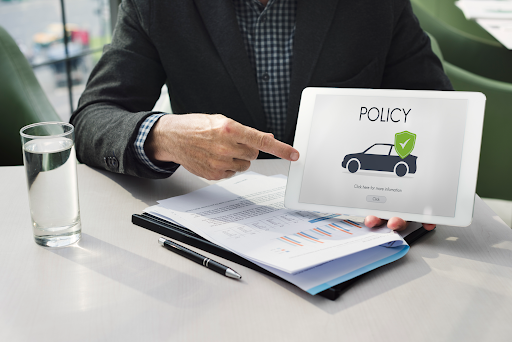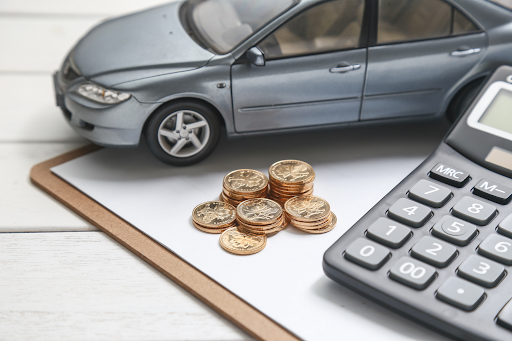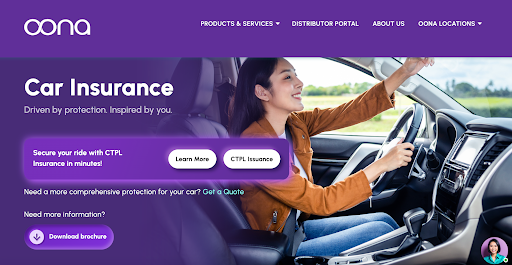9 february 2024 • AUTO
Understanding Car Insurance Coverage in the Philippines
Car insurance is a vital financial safety net that provides protection against potential losses resulting from accidents or other unforeseen events involving your vehicle. It is not only a legal requirement, but also a means to safeguard yourself, your passengers or family members, and your vehicle. However, navigating the complex world of car insurance can be overwhelming, especially for beginners. In this comprehensive guide, we will break down the key aspects of car insurance, including its various coverages, claim process, and cost factors, to help you make informed decisions and choose the right policy for your needs.
Contents
Table of contents
1. Introduction to Car Insurance
2. Understanding Compulsory Third Party Liability Insurance
3. Exploring Comprehensive and Collision Insurance
4. Unnamed Driver/Passenger Personal Accident Coverage
5. The Claims Process: Filing and Settlement
6. Deductibles: How They Work in Car Insurance
7. Factors Affecting Car Insurance Costs
8. Where to Purchase Car Insurance
9. Conclusion: Making Informed Decisions with Oona

1. Introduction to Car Insurance
Car insurance is a contractual agreement between car owners (policy holders) and the insurance company. By paying regular premiums, the policyholder transfers the financial responsibility or loss due to an auto accident or other circumstances, to the insurer. In return, the insurance company agrees to cover the costs associated with covered perils, such as collisions, theft, vandalism, and liability claims.
In short, car insurance provides peace of mind and financial protection for you, your passengers or family members, and other affected parties in the event of an accident involving your vehicle.
2. Understanding Compulsory Third Party Liability (CTPL) Insurance
One of the primary coverages in a car insurance policy is liability insurance. It is mandatory coverage by law to ensure that drivers can financially compensate others for injuries caused by their negligence.
Bodily Injury Liability
Bodily injury liability coverage helps pay for medical expenses, rehabilitation costs, legal fees and other related expenses if you are responsible for causing an accident that results in injuries to others. It provides financial protection for the injured party, including their medical costs.. The coverage amount is subject to sub limits per occurrence or any one occurrence, regardless of the number of individual claims.
3. Exploring Comprehensive Insurance
In addition to liability coverage, comprehensive insurance provides protection for your own vehicle in various scenarios. While liability insurance covers against legal liabilities for bodily injuries and/or fatality, these policies ensure that your vehicle is also financially protected.
Comprehensive Insurance Coverage
Comprehensive insurance covers damages to your vehicle that arise from collision as well as non-collision incidents, such as theft, fire, vandalism, natural disasters, falling objects, and even animal collisions. It provides compensation for the repair or replacement costs of your vehicle up to its actual cash value, after subtracting the deductible.
Comprehensive coverage is typically optional, unless you have a lease or loan on your vehicle. In such cases, the lender or leasing company may require you to carry these coverages to protect their financial interests.
4. Unnamed Driver / Passenger Personal Accident Coverage

This coverage provides compensation for medical expenses and related costs resulting from injuries sustained in an accident, regardless of who is at fault.
a. Unnamed Driver / Passenger Personal Accident Coverage
Unnamed Driver / Passenger Personal Accident covers the driver and passengers in case of accidental bodily injury and / or loss of life while boarding, riding in or alighting from the insured vehicle. It also covers partial and permanent disablement, including the medical expenses incurred for you and your passengers.
b. Roadside Assistance Insurance
Roadside assistance insurance provides coverage for emergency services such as towing, jump-starting a dead battery, tire changes, lockout assistance, and fuel delivery. It offers the convenience of help that is just a phone call away when you encounter unexpected breakdowns or roadside emergencies.
5. The Claims Process: Filing and Settlement

The claims process is a crucial aspect of car insurance, as it allows policyholders to receive compensation for covered losses and damages. Understanding how the claims process works can help you navigate through the necessary steps more effectively.
a. Gathering Evidence and Documentation
When an accident occurs,it is essential to gather as much evidence and documentation as possible. This includes obtaining contact and insurance information from the other party, filing a police report, taking photographs of the scene and damages, and collecting witness statements if applicable. These pieces of evidence will support your claim and provide the necessary documentation for the insurance company.
b. Contacting your Insurance Company
After gathering the necessary evidence, it is time to contact your insurance company to initiate the claims process. Follow the procedures outlined by your insurer, whether it is contacting your agent directly, utilizing an online claims portal, or using a mobile app.Provide all relevant details about the accident, damages, injuries, and any other information required by your insurer.
c. Working with a Claims Adjuster
Once your claim is filed, an insurance claims adjuster will be assigned to your case. The adjuster will investigate the accident, assess the damages, review estimates for repairs, and determine the validity of your claim. They will work with you to ensure that all necessary information is provided and guide you through the claims settlement process.
d. Settlement and Compensation
Upon completing the investigation, the insurance company will offer a settlement based on the coverage limits of your policy and the extent of the damages. If the settlement is deemed fair and acceptable, you can choose to accept it and receive the compensation. However, if you believe the offered settlement is insufficient, you may negotiate with the insurance company or seek legal advice to protect your rights and pursue a fair resolution.
6. Deductibles: How They Work in Car Insurance
Deductibles play a significant role in car insurance, affecting both the cost of your policy and the amount you receive in case of a claim. A deductible is the amount that policyholders must pay out of pocket before the insurance coverage kicks in. Understanding how deductibles work can help you make informed decisions when selecting a car insurance policy.
In car insurance, deductibles typically apply to comprehensive motorist coverages. The deductible amount is stated in the insurance policy. Generally, higher deductibles result in lower premiums, while lower deductibles lead to higher premiums.
When filing a claim, the insurance company subtracts the deductible amount from the total claim payout. For example, if you have a Php5000 deductible and file a claim for Php50,000, you would receive Php45,000 from the insurance company.
7. Determining Your Car Insurance Needs
Determining the right car insurance coverage for your needs requires careful consideration of various factors. While it is essential to comply with the minimum legal requirements in your country, it is equally crucial to assess your personal circumstances and the level of protection you desire.
Consider the following factors when determining your car insurance needs:
a. City Requirements
Start by familiarizing yourself with the car insurance requirements in your city. Each country has specific minimum coverage limits for liability insurance. Understanding these requirements will help you establish a baseline for your coverage.
b. Vehicle Value and Financing
The value of your vehicle and whether you have a lease or loan on it will influence the type and amount of coverage you need. Lenders and leasing companies typically require comprehensive coverage to protect their financial interests. Evaluate the value of your vehicle and consider the potential financial impact of repairing or replacing it in case of an accident.
c. Personal Assets and Liability risk
Assess your personal assets and consider the potential liability risk you face in the event of an accident. If you have significant assets that could be at risk in a lawsuit, it may be wise to opt for higher liability coverage limits to protect yourself financially.
d. Driving Habits and Risk Profile
Evaluate your driving habits and risk profile to determine the level of coverage you need. Factors such as mileage, driving record, location, and your loss experience should be taken into account. If you frequently drive in high-risk areas or have a history of accidents, you may want to consider sufficient coverages for your protection.
e. Budget and affordability
Consider your budget and the affordability of different coverage options. While it is important to have adequate coverage, it should also align with your financial capabilities. Strike a balance between the coverage you need and the premiums you can afford.
By carefully evaluating these factors, you can determine the appropriate coverage types, limits, and deductibles to meet your specific needs and provide comprehensive protection.
8. Factors Affecting Car Insurance Costs

Car insurance premiums are influenced by various factors, and understanding these factors can help you anticipate and manage your insurance costs. Insurance providers use these factors to assess the risk associated with insuring a particular driver and vehicle combination. The key factors that affect car insurance costs include:
a. Age and gender
Younger drivers, particularly teenagers, are considered higher-risk drivers due to their lack of experience. Consequently, insurance premiums for young drivers are typically higher. Additionally, gender can also impact insurance costs, as statistics show that young male drivers tend to have a higher accident rate than their female counterparts.
b. Driving record
Your driving record is a critical factor in determining your insurance premiums. Drivers with clean records and no history of accidents or traffic violations are considered lower risk and are rewarded with lower premiums. On the other hand, drivers with multiple accidents or violations may face higher premiums due to the increased likelihood of future claims.
c. Vehicle model and features
The make, model, and age of your vehicle play a significant role in determining your insurance costs. Generally, luxury or high-performance vehicles have higher insurance premiums due to their higher repair costs and increased theft risk. Additionally, vehicles equipped with advanced safety features and anti-theft devices may be eligible for discounts, as they reduce the likelihood of accidents and theft.
d. Location
Where you live can also impact your car insurance premiums. Areas with high population densities, higher crime rates, or higher accident frequencies tend to have higher insurance costs.
e. Coverage limits and deductibles
The coverage limits and deductibles you choose will directly impact your insurance costs. Higher coverage limits and lower deductibles result in higher premiums, as the insurance company assumes a greater financial risk. Conversely, lower coverage limits and higher deductibles can lower your premiums.
f. Claims history
Your claims history can influence your insurance costs. Insurers may consider your past claims and the frequency of claims when determining premiums. Drivers with a history of frequent claims or involvement in accidents may face higher premiums.
Understanding these factors and how they influence your insurance costs can help you make informed decisions when selecting coverage and managing your budget effectively.
9. Where to Purchase Car Insurance
There are various avenues for purchasing car insurance, each with its own advantages and considerations. Some primary options are:
a. Directly from Insurance Companies
Purchasing insurance directly from an insurance company's website offers distinct advantages. Firstly, rates are transparent and devoid of third-party fees, providing customers with clear and straightforward pricing.
Secondly, the direct interaction with the insurance company ensures personalized service at every stage, from initial inquiries and policy purchase to after-service and claims. This direct communication streamlines the process, allowing for efficient and customized solutions.
In addition to the convenience of online transactions and immediate policy issuance, customers benefit from comprehensive information on the company's website, empowering them to make well-informed decisions tailored to their specific needs.
b. Insurance agents and brokers
Insurance agents and brokers represent specific insurance companies and can guide you through the process of selecting and purchasing a policy. They can provide personalized advice, explain coverage options, and help you navigate the complexities of insurance terminology. Agents and brokers can also assist with claims and policy management.
c. Online insurance marketplaces
Online insurance marketplaces allow you to compare quotes and policies from multiple insurance companies in one place. They provide a convenient platform for researching and selecting the best insurance options based on your specific needs and budget. Online marketplaces offer transparency and the ability to customize coverage, making it easier to find the most suitable policy.
When choosing where to purchase car insurance, consider factors such as the level of guidance and support you require, your comfort with online transactions, and the desire for personalized service. Ultimately, the goal is to find a reputable insurance provider that offers competitive rates, excellent customer service, and the coverage you need.
Making Informed Decisions with Oona

Car insurance is a critical component of responsible vehicle ownership, providing financial protection and peace of mind in the face of unexpected events. By understanding the various coverages available, the claims process, and the factors that influence insurance costs, you can make informed decisions that align with your needs and budget.
And when it comes to car insurance, Oona stands out as the provider offering the most comprehensive coverage in 2024. Oona should be your go-to choice for:
Extensive coverage options
Flexible plans
Exceptional customer service
Competitive pricing
Remember to assess your personal circumstances, evaluate your risk profile, and consider
the level of coverage required to protect your financial interests adequately. By staying
informed and regularly reviewing your policy, you can ensure that your car insurance
provides the necessary protection and adapts to your changing circumstances.
Navigating the world of car insurance can be complex, but armed with knowledge and the
right insurance partner, you can confidently select the right coverage. Protect yourself, your
passengers, and your vehicle by investing in comprehensive car insurance that meets your
specific needs and offers the security you deserve.
Related Posts




